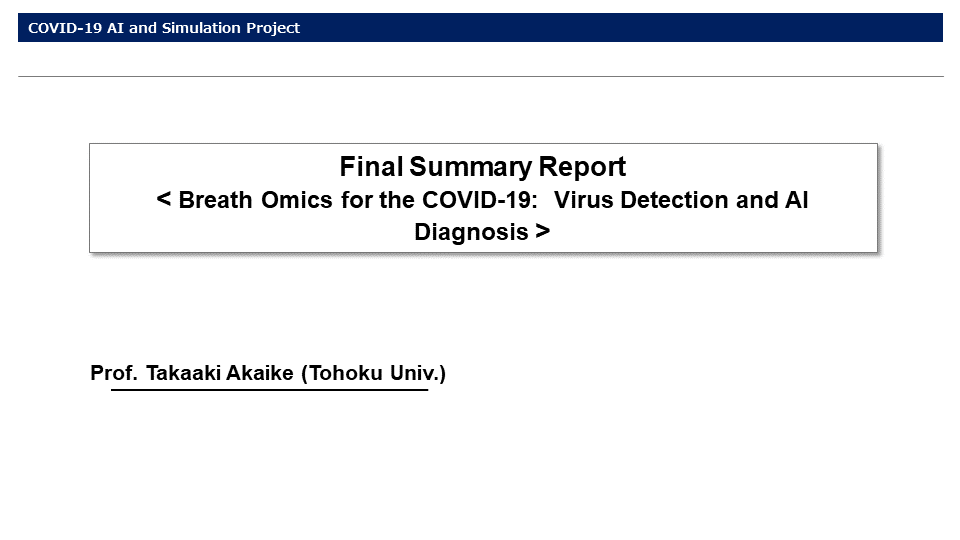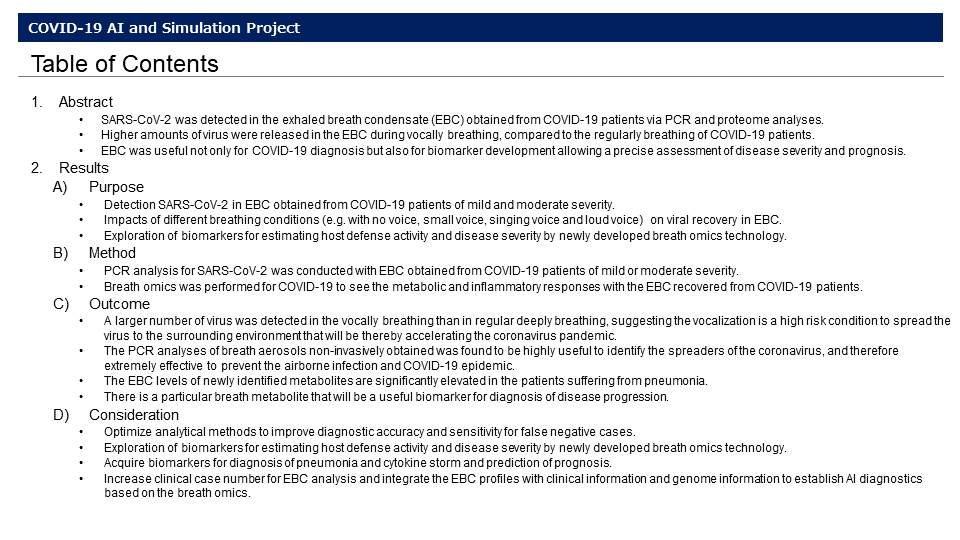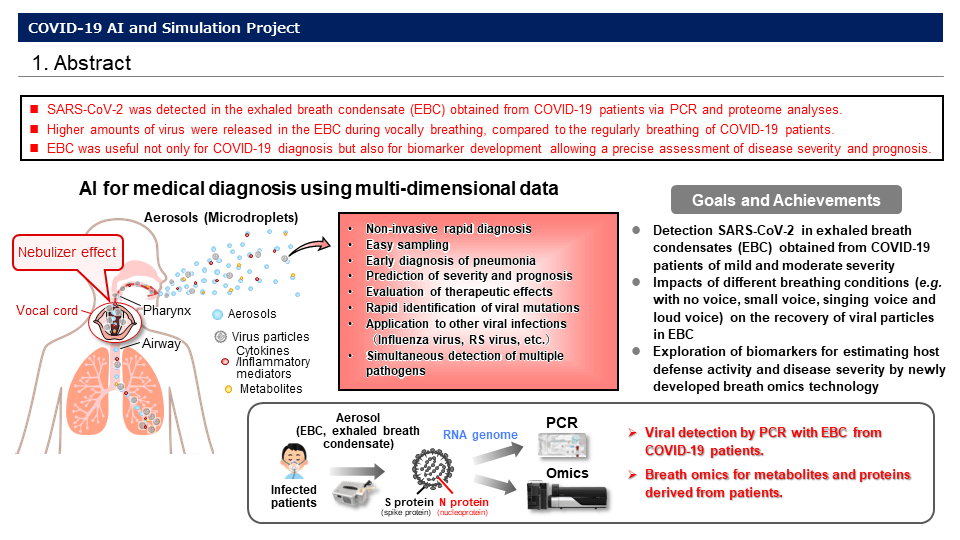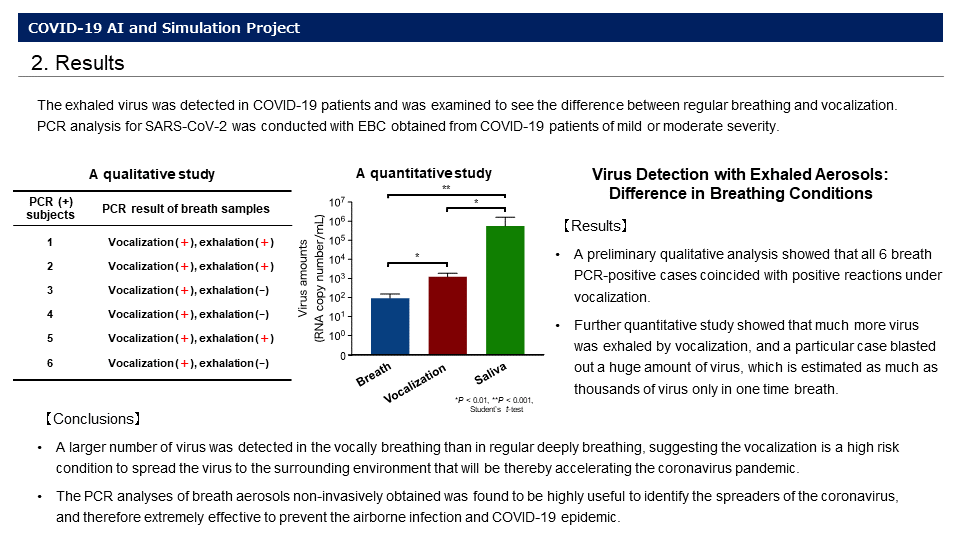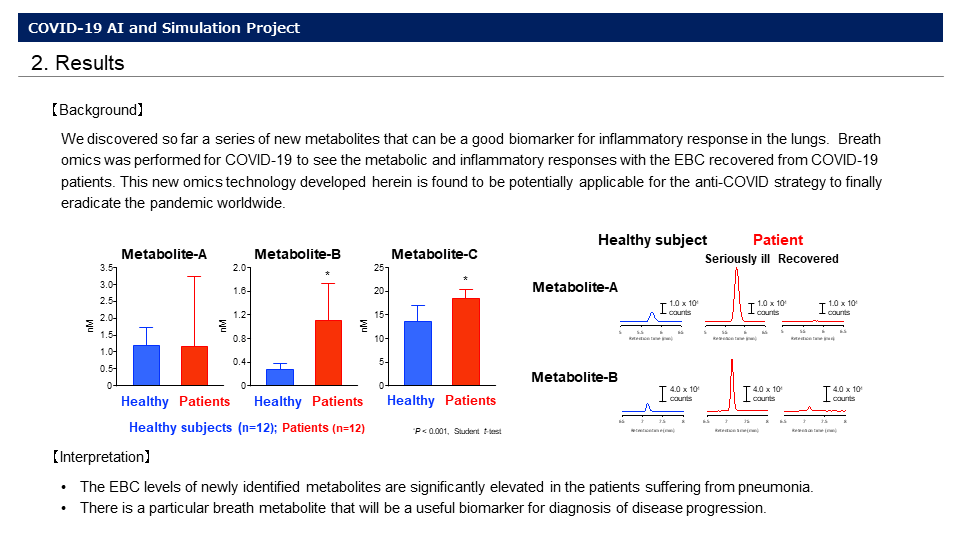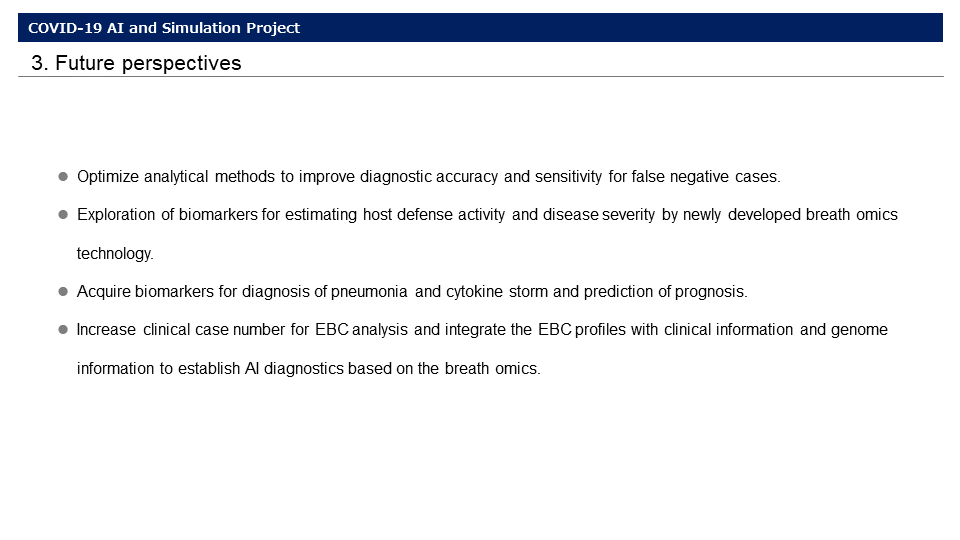Research Results:RQ3_2020
Research Area 3
-
Final Summary Report< Breath Omics for the COVID-19: Virus Detection and AI Diagnosis >
2021.02.03
Organization
Tohoku University Graduate School of Medicine
Researcher
Takaaki Akaike
タグ
Related reports
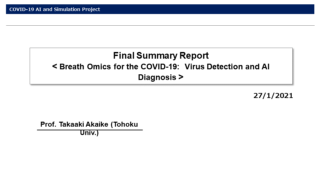
Organization
Tohoku University Graduate School of Medicine
Researcher
Takaaki Akaike
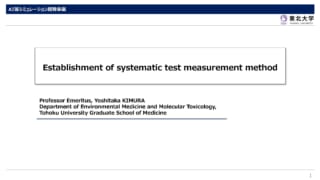
Organization
Tohoku University Graduate School of Medicine
Researcher
Yoshitaka Kimura
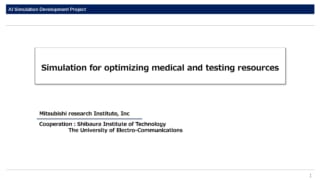
Organization
Mitsubishi research Institute, Inc.
Researcher
Mitsubishi research Institute, Inc
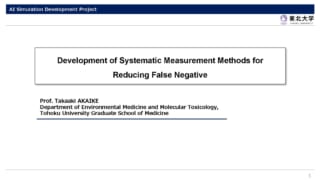
Organization
Tohoku University Graduate School of Medicine
Researcher
Takaaki Akaike
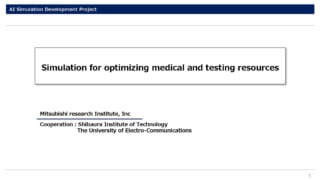
Organization
Mitsubishi research Institute, Inc.
Researcher
Mitsubishi research Institute, Inc
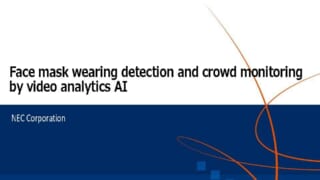
Organization
NEC Corporation
